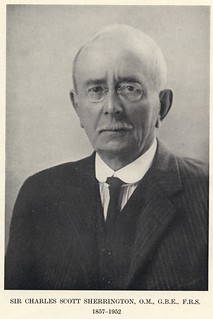- External URL
- Creation
-
Creator (Definite): Sir Charles Scott SherringtonDate: 1921
- Current Holder(s)
-
- No links match your filters. Clear Filters
-
Cites
 Lucien Bull
Lucien Bull
Description:'The registration of the myograph movement has been by optical projection on a travelling photographic plate, time being recorded on the plate by a rotary shadow-marker of the pattern devised by Mr. Bull, of the Institut Marey, Paris.' (245)
-
Cited by
 T. Quick, 'Disciplining Physiological Psychology: Cinematographs as Epistemic Devices, 1897-1922', Science in Context 30 (4), pp. 423-474.
T. Quick, 'Disciplining Physiological Psychology: Cinematographs as Epistemic Devices, 1897-1922', Science in Context 30 (4), pp. 423-474.
Description:' That Sherrington ended his scientific engagement with experimental devices designed to produce sensory effects around 1906 should not be taken as evidence that cinematographs had decreasing significance for physiological practitioners during the first two decades of the twentieth century. As Hannah Landecker and others have shown, it was for their recording and representational rather than their stimulatory capacities that these tools were most prominently adopted. During the first decades of the twentieth century, cinematographs were frequently deployed in attempts to inscribe and represent the motile aspects of life. Such interests were accompanied by further innovations in cinematographic tools themselves. For example, at the Institut Marey, Charles-Émile François-Franck and Lucien Bull developed means of recording and projecting living nature in three dimensions, and adapted celluloid film for the creation of highly sensitive myographic equipment (Bull 1910; Cartwright 1995, 40-46). During the 1920s, Sherrington and the group of his students and colleagues associated with the Oxford laboratory of physiology would adapt these latter tools to their 'optical myograph' studies of minute muscle movements (Sherrington 1921, 245-246). Such studies constituted a re-assertion of the representational over the stimulatory possibilities that cinematographic devices afforded.'
Relevant passage from Sherrington:
'The registration of the myograph movement has been by optical projection on a travelling photographic plate, time being recorded on the plate by a rotary shadow-marker of the pattern devised by Mr. Bull, of the Institut Marey, Paris.' (245)







